MilkyWay
Latest
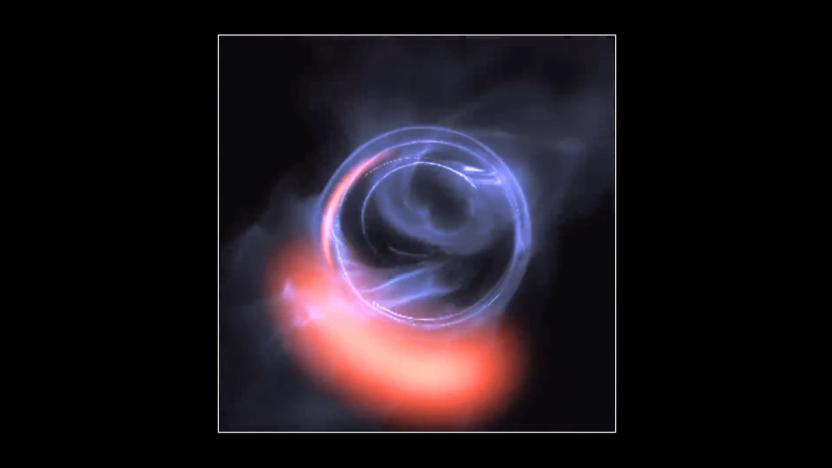
Scientists find evidence of a black hole at our galaxy’s center
Researchers have long suspected that a supermassive black hole lies in the center of our galaxy, and now they have strong evidence to support that suspicion. Using the Very Large Telescope -- an array of four individual telescopes stationed in the Atacama Desert in Chile -- scientists have been observing Sagittarius A* (pronounced Sagittarius A-star), an object in the center of the Milky Way galaxy thought to be a supermassive black hole. During their work, the research team observed three bright flares orbiting around Sagittarius A*, which completed 150-million-mile circuits in just 45 minutes. That's about 30 percent the speed of light.

The Andromeda galaxy ate our sister galaxy
The Andromeda galaxy is our closest galactic neighbor, and it apparently has been hiding a dark past. Scientists from the University of Michigan discovered that this sinister figure cannibalized our sibling approximately two billion years ago. That's right, at one point, the Milky Way had a sister galaxy, and Andromeda ate it.
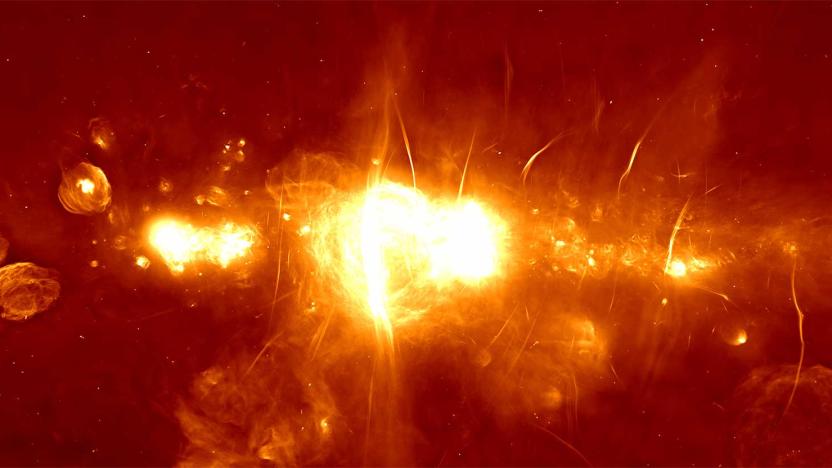
Ultra-sensitive radio telescope debuts in South Africa
Another piece of the Square Kilometer Array's puzzle just fell into place. South Africa has officially switched on MeerKAT, billed as the most sensitive radio telescope of its type on the planet. Some parts of the array have been gathering data, but it's now nearly ready to use interferometry from all 64 dishes to map the normally invisible portions of space in exceptionally high detail. It should be completely ready for scientific experiments in about two months, according to Nature. However, you won't have to wait that long to see fresh results -- you're looking at some above.

Hubble flies through the Milky Way's 'raucous star nursery'
Over the past 28 years, the Hubble Space Telescope has inspired a generation of astronomers with insanely dramatic views of the universe, but it's hardly done blowing our minds. NASA has unveiled a new fly-through video of the Lagoon Nebula. Located in the center of the Milky Way, NASA calls it a "raucous star nursery" full of dust and star formation with "Herschel 36," a star 200,000 times larger than our sun, at its center.
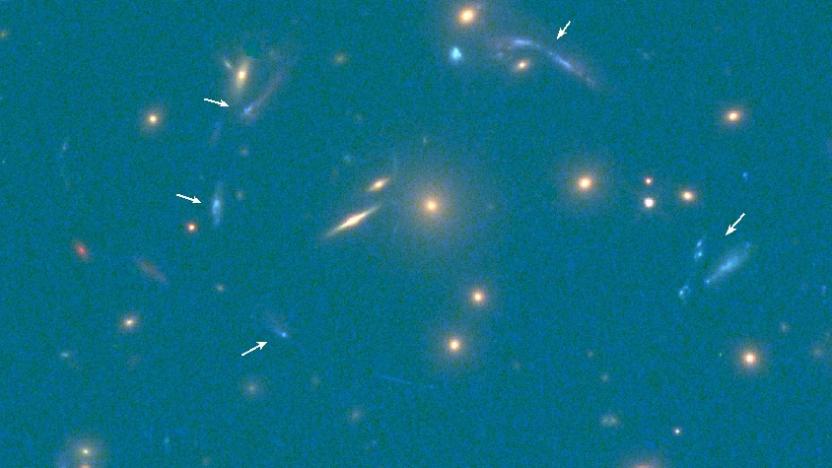
Researchers discover one of the brightest galaxies ever seen
Scientists at the Instituto de Astrofisica de Canarias, a research institute in the Canary Islands, just discovered one of the brightest galaxies we've ever come across. It's around a thousand times brighter than our galaxy, has a very high rate of star formation and is 10 thousand million light years away.

An excess of 'failed' stars is a bad sign for alien life
We know for a fact that life can exist on planets that orbit yellow dwarf stars like our sun and are optimistic about the chances for smaller red dwarf systems like Trappist-1. When it comes to their awkward brown dwarf cousins, however, astronomers don't think life is possible -- they're too small and cool to support it. So it's a bit of a bummer that astronomers have discovered as many as 100 billion brown dwarfs in our galaxy, out of a maximum 400 billion stars in total.

Milky Way's fastest stars could be runaways from another galaxy
The fastest-moving stars in our galaxy, known as hypervelocity stars, may have a more interesting backstory than scientists first thought, according to new research from Cambridge University. Astronomers initially believed these super-rare stars -- only 20 have been identified -- had been expelled from the center of the Milky Way by a supermassive black hole, but the study shows that they may have started their breakneck journeys in another galaxy altogether: the Large Magellanic Cloud (LMC).
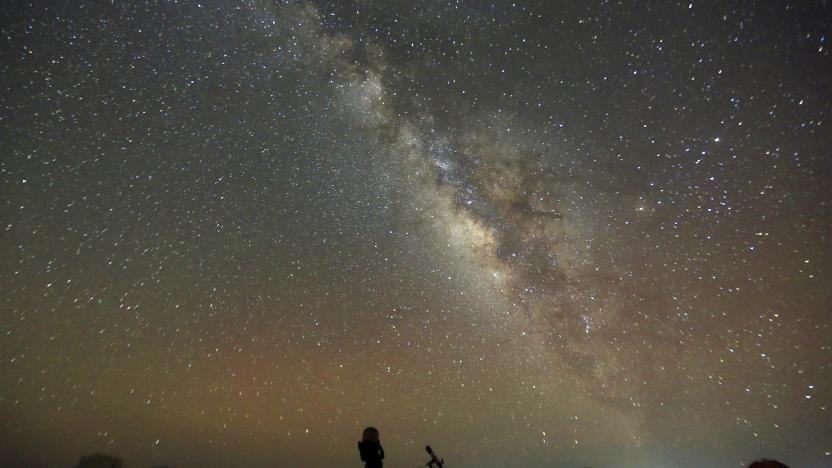
Astronomers more accurately calculate the Milky Way's mass
It's impossible to arrive at an exact measurement for the billions of stars and other objects that make up the Milky Way. However, a group of astronomers say they have calculated the most accurate estimate to date. In a paper that will be published in The Astrophysics Journal, the scientists estimate the mass of the Milky Way to be 9.5 x 1041 kilograms or 95 followed by 40 zeros. For reference, that's 4.8 x 1011 times the mass of the sun. Astronomers use the so-called "solar masses" as a standard unit of measure, comparing other objects and formations to the sun.

Massive galaxy cluster found 'hiding' behind the Milky Way
You would think that it would be easy to spot a cosmic structure as enormous as a supercluster holding legions of galaxies, but not so -- the Milky Way can hide all kinds of objects, usually due to dust and stars obscuring the view. If you need proof, you just need to ask the astronomers who have discovered the Vela supercluster, a giant collection of galaxies about 800 million light years away (shown as "VSC" above). They only detected it by making "thousands" of spectroscopic studies of partially obscured galaxies -- it was hidden on the far side of the Milky Way.
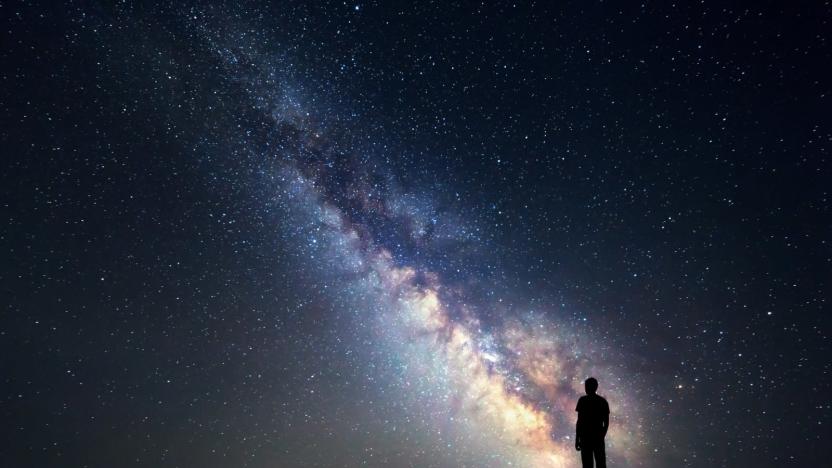
Humanity's corner of the Milky Way may be larger than expected
If you accept conventional views of the Milky Way, humans live in a sort of cosmic cul-de-sac: our star is in the Orion Arm (aka Local Arm), a small spur sitting in between the much larger Sagittarius and Perseus arms. A team of international researchers might just shake up that sense of place, however. They've published a study indicating that our arm is much, much larger than once thought. Instead, it incorporates a large arm that extends almost all the way to the Perseus Arm, and another long spur that branches between the Orion and Sagittarius arms. It's now believed to be about 25,000 light years long, or several times longer than expected.

ICYMI: Treat all your wine right with a $1,500 fridge
try{document.getElementById("aol-cms-player-1").style.display="none";}catch(e){}Today on In Case You Missed It: A wine fridge called Plum can scan your wine bottles, seals so they stay fresh and then calibrates the temperature inside for maximum deliciousness of pour for every glass. Downside? It's $1,500 so you could take a vacation to wine country instead. Meanwhile, Harvard scientists announced a 3D-printed heart on a chip that has integrated sensors, so it can be used to test medications, which should rapidly accelerate medical studies. The most detailed Milky Way Galaxy yet is here. The particle accelerator on a chip talk at the SLAC lab is here and the Singapore driverless bus news is here. For drones attempting a lightbulb change, go here. As always, please share any interesting tech or science videos you find by using the #ICYMI hashtag on Twitter for @mskerryd.
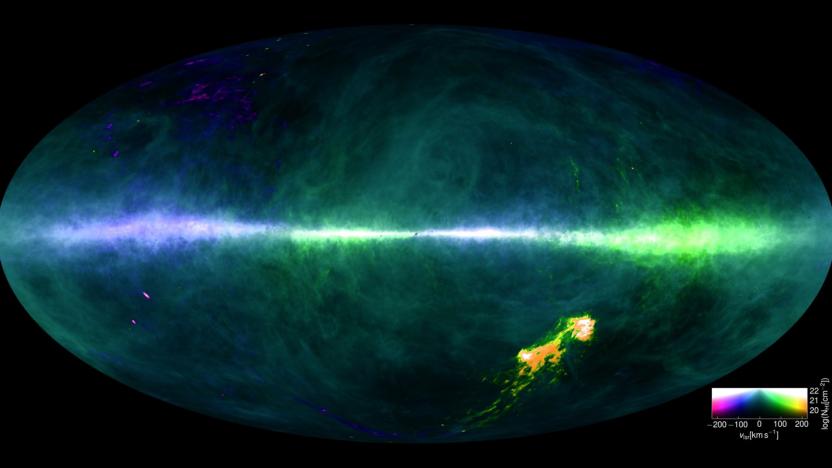
Scientists map the Milky Way Galaxy in exceptional detail
There have been detailed maps of the Milky Way before, but none quite so ornate as this. Researchers in the HI4PI sky survey have created a fine-grained map of our home galaxy using its most common material: neutral atomic hydrogen. Such studies have taken place before, as you might guess. However, the use of 10 billion data points from large radio telescopes (the Parkes Observatory and Effelsberg 100m) and noise-filtering algorithms have produced an image with twice the sensitivity as the previous best, and four times the angular resolution. The result? A view of the Milky Way so comprehensive that you can finally see the finer details of cloud structures in between stars -- they were too blurry before.
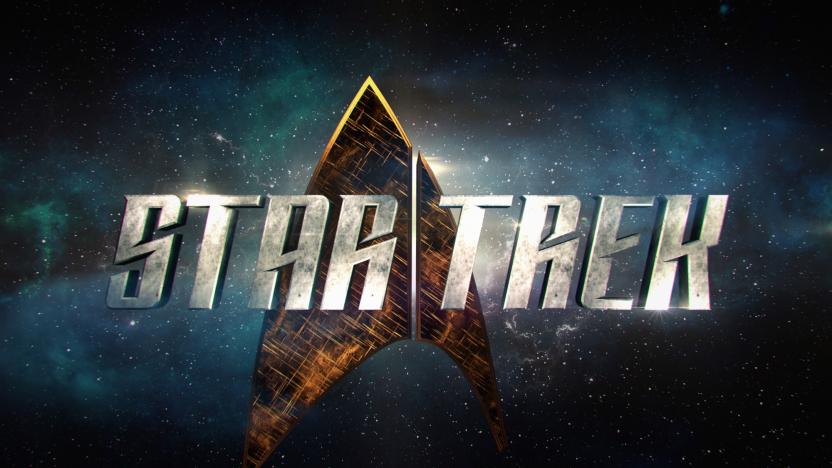
After Math: The final frontier
We saw some significant developments in the field of space exploration this week. Jeff Bezos unveiled his latest heavy lift rocket. The Gaia satellite has mapped its billionth Milky Way star. China launched another piece of its Heavenly Palace into orbit. And Galaxies just can't seem to stop exploding. Numbers, because how else are you going to accurately measure your insignificance against the infinite voids of space?
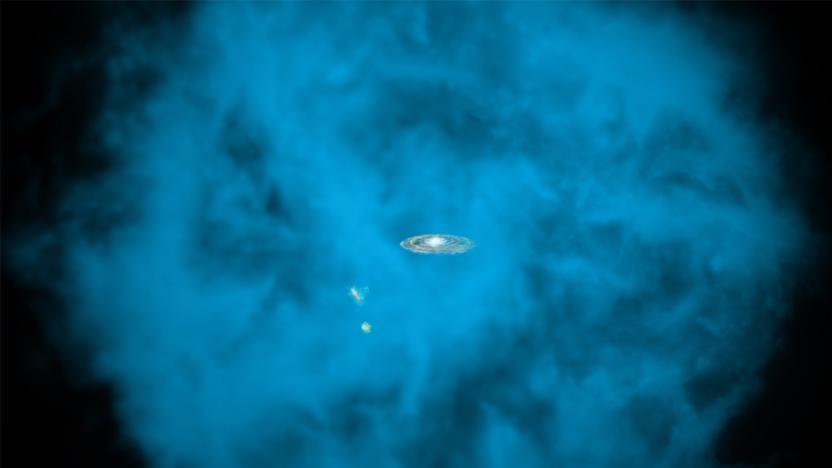
Milky Way's spinning 'halo' helps reveal how galaxy formed
Out beyond our solar system are billions of other planets, starts, moon rocks and solar systems. Beyond that, however is an enormous, hot, gaseous halo of matter. It stretches for hundreds of thousands of light years, and could be the key to sorting out why there's not as much matter in the Milky Way as scientists estimate there should be. Now, scientists have learned something new about this layer of gas: It's spinning at almost the same rate as the rest of our galaxy.

A third of the world can no longer see the Milky Way
If you never thought light pollution was a problem before, think again. New research claims that more than a third of humanity cannot see the Milky Way anymore, because artificial lights have made the night sky too bright to view the galaxy.
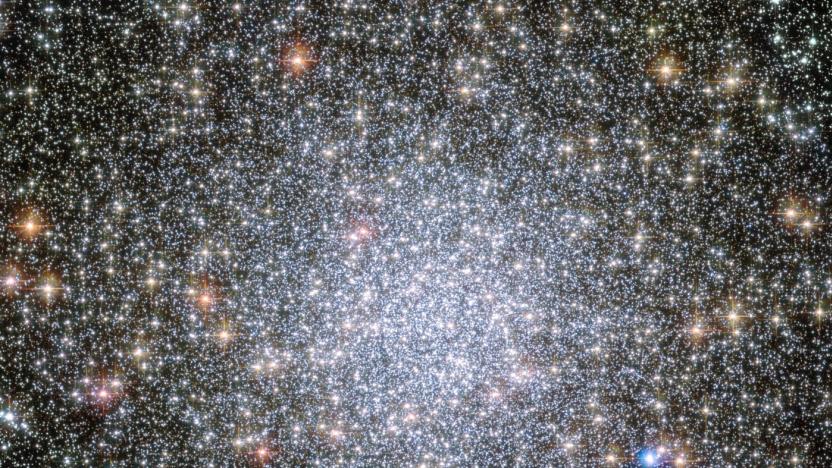
Listen to the sounds of the Milky Way galaxy's oldest stars
You probably won't get to visit the most ancient stars in humanity's home galaxy, but you'll at least get to hear what they sounded like when they were young. University of Birmingham researchers have detected the acoustic oscillations of Milky Way stars that are about 13 billion years old, or not much younger than the galaxy itself. The trick was to use asteroseismology, or measuring the tiny pulses in brightness triggered by sound caught inside those stars. As you'll hear at the source link, they're not exactly hot summer jams -- these are ominous tones that are more likely to remind you of an emergency broadcast signal than anything else.

ICYMI: Multi-headed 3D printer, robo plant grafting and more
#fivemin-widget-blogsmith-image-815575{display:none;} .cke_show_borders #fivemin-widget-blogsmith-image-815575, #postcontentcontainer #fivemin-widget-blogsmith-image-815575{width:570px;display:block;} try{document.getElementById("fivemin-widget-blogsmith-image-815575").style.display="none";}catch(e){}Today on In Case You Missed It: Autodesk built a 3D printing assembly line that gives different jobs to several print heads, allowing them to work collaboratively and quickly spit out a finished project. Clemson University used a Korean robot to graft up to 3,000 plants an hour. And a Kickstarter project for an augmented reality shirt is designed to teach kids and interested adults all about the internal organs. The Milky Way is looking stunning in newly released photos from the APEX telescope. As always, please share any great tech or science videos you find by using the #ICYMI hashtag on Twitter for @mskerryd.
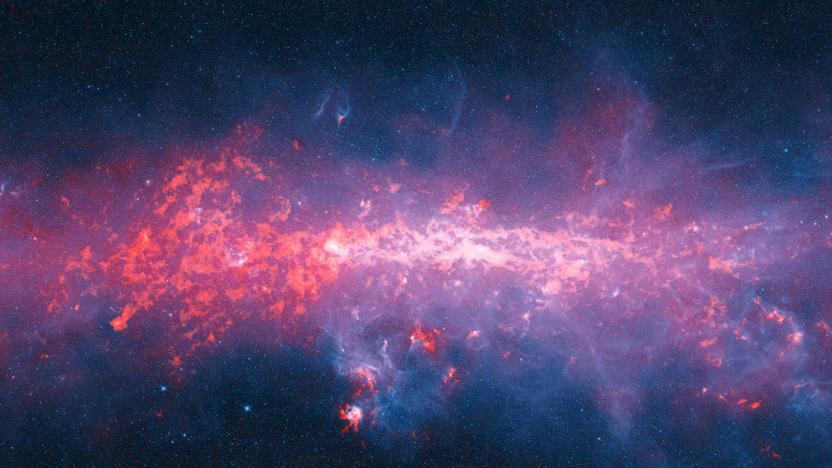
APEX telescope maps Milky Way's star-forming regions
The APEX telescope in Chile has completed its biggest project, resulting in the most complete view of the cold galaxy we've ever seen. It spent almost a decade peering into the skies for the APEX Telescope Large Area Survey of the Galaxy or ATLASGAL in submillimeter wavelengths, which fall in between infrared light and radio waves. Observing the universe in those wavelengths allowed the telescope to see all the cold gas and dust in the galactic plane that's visible from the southern hemisphere. In the image above and the video below the fold, you can see those cold clouds as bright red blotches that wouldn't look out of place in an abstract painting.

Gamma ray map offers best view yet of our galaxy's energy
Space is full of gamma rays and other intense forms of energy, but you've only ever had a partial picture of it. Ground-based telescopes can only see so much, and even the Fermi space telescope (designed to catch these energies) has missed out on a lot of it... until now, that is. NASA has posted a much more complete gamma ray map using 6 years' worth of refined Fermi data. The result is a far more detailed and comprehensive view of the energy 'bright spots' (between 50 billion to 2 trillion electron volts) in the Milky Way galaxy and beyond. The pretty picture you see above includes the leftovers of supernovae, pulsar wind nebulae and even galaxies whose supermassive black holes make them detectable from millions of light years away.

This 46-gigapixel image is the biggest map of space ever made
Astronomers at Germany's Ruhr-Universitat Bochum have unveiled the largest space map ever compiled on Friday. The image is composited from some 268 individual shots captured over the past five years and spans a staggering 46 billion pixels. That's 855,000 by 54,000 pixels. "If you would want to display this in full resolution on full HD TV screens, you would need more than 22,000 screens," Moritz Hackstein, a PhD candidate who conducted the survey as part of his thesis, told CBS News.










